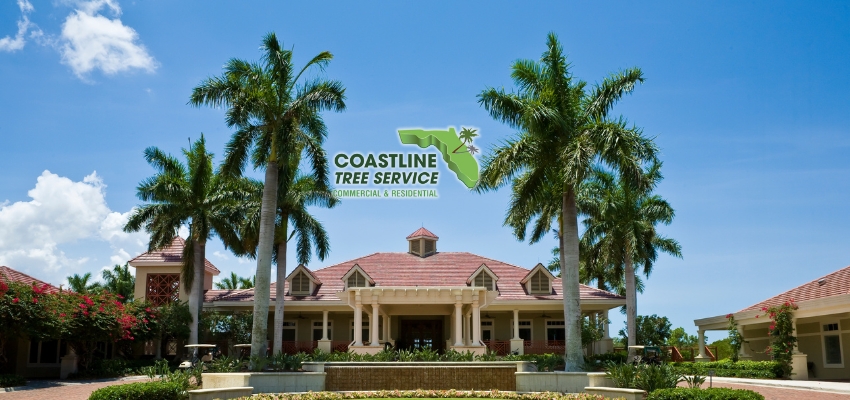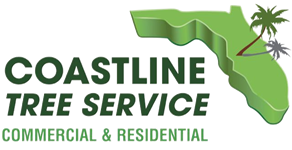
Top 5 Tree Species for Pool & Clubhouse Areas in SWFL HOA Communities
When it comes to enhancing the aesthetic appeal and functionality of pool and clubhouse areas within HOA communities, selecting the right tree species is critical. Trees not only provide shade and beauty but also contribute to the overall ambiance and usability of common areas. Here, we outline the top five tree species that are ideal for planting near pools and clubhouses, and explore whether there is a significant difference in choosing trees for resident common areas versus non-resident areas like ponds or lakes.
1. Palm Trees
Why Palms?
Palm trees are synonymous with relaxation and luxury, making them a quintessential choice for poolside settings. They provide moderate shade without shedding excessive leaves or branches into the pool, ensuring minimal maintenance.
Best Varieties
- Queen Palm
- Canary Island Date Palm
- Pygmy Date Palm
Considerations
Palms thrive in warm climates and well-drained soils, making them perfect for sun-soaked pool areas. Their root systems are non-invasive, ensuring they won’t disrupt pool structures or pathways.
2. Crape Myrtle (Lagerstroemia)
Why Crape Myrtle?
Crape Myrtles bring a splash of vibrant color to any setting with their stunning blooms. They are drought-tolerant and require minimal upkeep, making them ideal for busy community spaces.
Best Varieties
- Natchez
- Tuscarora
- Muskogee
Considerations
These trees are perfect for framing entryways to clubhouses or lining walkways without overwhelming the space. They have a compact growth habit and are relatively pest-resistant.
3. Japanese Maple (Acer palmatum)
Why Japanese Maple?
Japanese Maples add elegance and tranquility to any setting. Their delicate foliage and stunning autumn colors can create a serene environment around pools and clubhouses.
Best Varieties
- Bloodgood
- Coral Bark
- Emperor One
Considerations
These trees prefer partial shade and well-drained soil. They are more suited to climates with cooler summers and need protection from harsh afternoon sun, making them ideal for shaded corners near clubhouses.
4. Magnolia (Magnolia grandiflora)
Why Magnolia?
Magnolia trees are known for their fragrant, large white flowers and glossy green leaves. They add a touch of Southern charm and elegance to poolside landscapes.
Best Varieties
- Southern Magnolia
- Little Gem
- Teddy Bear
Considerations
Magnolias can grow quite large, so dwarf varieties like ‘Little Gem’ are recommended for pool and clubhouse areas. They require regular watering and well-drained soil.
5. Desert Willow (Chilopsis linearis)
Why Desert Willow?
Desert Willows are drought-tolerant and produce beautiful, trumpet-shaped flowers. They are well-suited for hot, dry climates and require minimal water once established.
Best Varieties
- Art’s Seedless
- Bubba
- Lucretia Hamilton
Considerations
Desert Willows have a graceful, open canopy that provides light shade without cluttering the ground with excessive debris, making them perfect for poolside areas.
Trees for Resident Common Areas vs. Non-Resident Areas
Resident Common Areas (Pools & Clubhouses)
- Focus on Aesthetics and Maintenance: Trees in these areas should enhance the visual appeal and provide practical benefits like shade without dropping significant debris into pools or high-traffic areas.
- Safety and Accessibility: Choose trees with non-invasive roots to avoid damaging sidewalks and pool structures. Opt for species that do not attract pests or produce allergenic pollen.
Non-Resident Areas (Ponds & Lakes)
- Ecological Benefits: In non-resident areas, trees can focus more on ecological benefits such as erosion control, wildlife habitat, and water quality improvement.
- Less Maintenance: These areas can accommodate trees that might require more space or drop more leaves since maintenance is less of a concern compared to high-traffic resident areas.
Key Differences
The primary difference lies in maintenance and safety. For resident common areas, trees need to be low-maintenance, safe, and aesthetically pleasing. In contrast, trees in non-resident areas can focus more on environmental benefits and require less frequent upkeep.
Consider Coastline Tree Service As Your HOA’s Tree Service Partner
Choosing the right tree species for different parts of your SWFL HOA community involves balancing aesthetics, maintenance, and safety. By selecting appropriate trees for pool and clubhouse areas, your HOA can create inviting, beautiful spaces for residents to enjoy, while also considering the unique needs of non-resident areas like ponds and lakes. With thoughtful planning, these green giants can significantly enhance the living experience for all community members.
At Coastline Tree Service, we pride ourselves on being the premier choice for HOA tree maintenance services in Southwest Florida. Our team of certified arborists and landscaping experts are dedicated to ensuring that your community’s trees are healthy, beautiful, and well-maintained. Whether you need tree selection and planting, routine care, or emergency services, we have the expertise and resources to manage all aspects of tree care. Trust Coastline Tree Service to enhance the natural beauty of your HOA community, creating serene and inviting spaces for all residents to enjoy.
We proudly serve and offer SW Florida HOA Tree Management Services in Naples, Marco Island, Bonita Springs, Estero, Fort Myers, Fort Myers Beach, North Fort Myers, Cape Coral, Sanibel & Punta Gorda.
Give us a Call at: (239) 895-3230 or contact us online at:https://www.coastlinetree.com/contact-us/.
